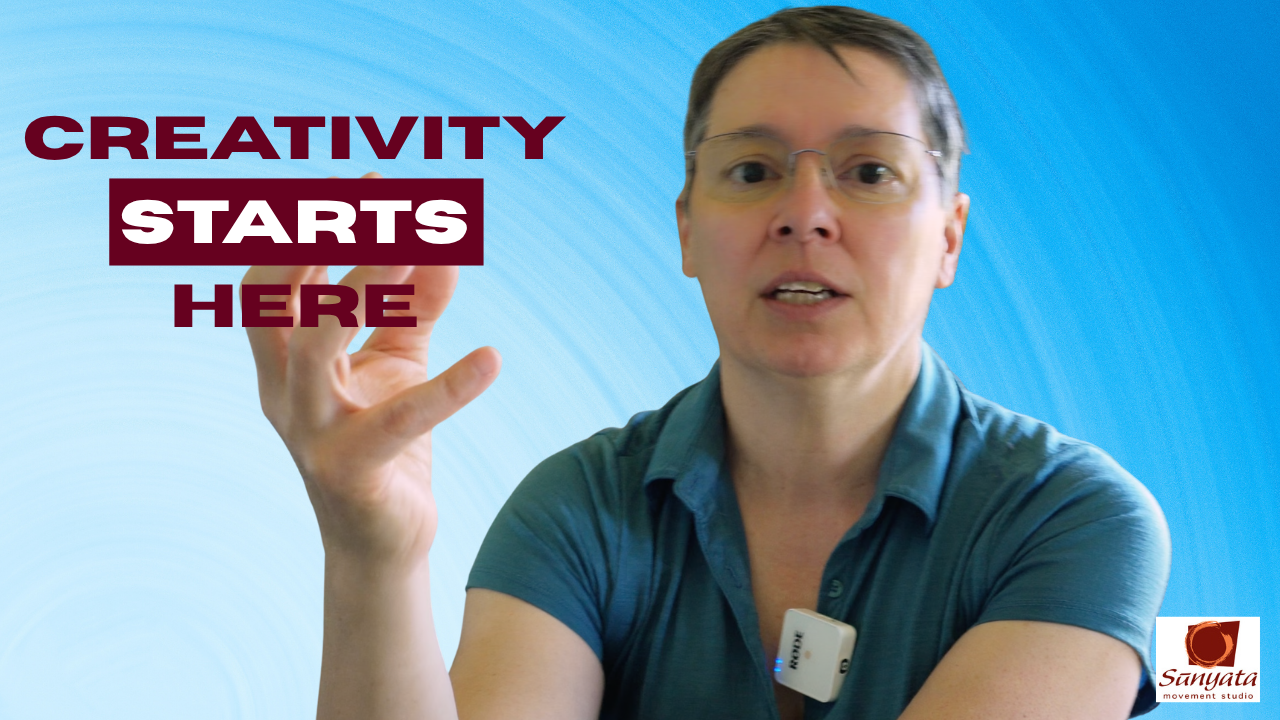
Stop Trying So Hard.
Have you ever noticed that your best ideas often come when you stop trying so hard? In my work with the Feldenkrais Method® and Awareness Through Movement, I’ve learned that attention is a creative action — especially when we feel stuck.
I’d love to hear — how do you experience creativity when you’re not forcing it?
Video timestamps:
00:00 – Introduction
00:36 – Learning as a Creative Act
00:44 – Problem-Solving and Skilled Attention
02:35 – How to Attend When You Don’t Know What to Do
03:28 – Stuckness as a Doorway
04:22 – How You Can Practice This Today
05:17 – Upcoming Free Resources and What’s Next
Video Transcript
“What if the moments when you don’t know what to do…were the very moments that could make you most creative?” Hi, I’m Gisele from Sunyata Movement Studio. Welcome back to Attention as Action, a series where we explore how to enhance our capacities for attending well. Today, we’re going to look at how learning, problem-solving, and creativity are all built on the same foundation:
how you attend — especially when you don’t know what to do.
1. Learning Is a Creative Act
Learning isn’t just absorbing information. It’s the act of creating something new in yourself: a new connection, a new possibility, a new way of being. And real learning — not just memorizing, but transforming — happens most powerfully in the moments when you don’t know what to do. When you hit a wall. When the old ways don’t work. When you’re uncomfortable, uncertain, or lost. Those moments aren’t mistakes. They’re invitations to create.
Rick Rubin captures this spirit beautifully when he says:
“Being stuck is part of the process. If you use the opportunity to make new choices, it can open doors you didn’t even know were there.”
And how you attend in those moments — whether you tighten, narrow, and force… or whether you soften, widen, and sense —
makes all the difference.
2. Problem-Solving Is a Creative Act
Problem-solving isn’t about grinding harder. It’s about allowing new configurations to appear — ones you couldn’t have predicted from where you started. When you get stuck, the natural impulse is to double down: focus harder, try harder, push through. But often, the solution you need lives outside the frame you’re looking through. That’s why — broadening what you notice, sensing your self, sensing the environment, noticing the periphery — is a crucial creative skill.
Krishnamurti said:
“The ability to observe without evaluating is the highest form of intelligence.” “”Attention is not the same thing as concentration. Concentration is exclusion; attention, which is total awareness, excludes nothing.”
And when you attend inclusively, without rushing to label or judge, you create the space where new insights can land. You become not just the doer… but also the receiver of solutions.
3. Attending When You Don’t Know What to Do
In Awareness Through Movement lessons, you encounter this moment all the time:
You try a movement — it feels awkward. You don’t know how to make it easier. You might even feel a little lost. And that’s the perfect moment.
Instead of forcing or judging, we invite a different kind of attending:
You broaden your sensing beyond just the part that’s stuck… You notice what else is happening: your breathing, your contact with the ground, distant sensations… You allow yourself to not know for a bit — and stay curious… And then — often quietly, subtly — new options begin to appear. Movement reorganizes itself. Attention reorganizes itself. And in that, learning happens — creative, living learning.
4. Stuckness Is a Doorway
When you’re creating, whether it’s solving a work problem, composing music, figuring out how to have a hard conversation — you’re going to meet moments of “I don’t know.” Those moments are not a problem to fix. They’re the threshold of new possibilities. But only if you know how to attend in a way that invites new configurations.
That’s what Feldenkrais® and Awareness Through Movement help you practice:
the art of being present enough, soft enough, wide enough, to catch the insights that would otherwise slip past.
Rick Rubin again:
“You’re just sitting there with your antennas out. And you’re hoping that a signal comes in.”
Practicing inclusive, skilled attention sharpens your antennas — and teaches you how to stay ready, without forcing.
5. How You Can Start Practicing This
Next time you’re stuck — whether during a project, a decision, or an Awareness Through Movement lesson — try this:
Widen your focus. Include more than just the problem in your sensing… Include your whole self. Sense your entire self, the environment (sounds, sights, smells), your breathing… Welcome not knowing. Treat uncertainty as a space, an opportunity, not as a failure. Let yourself sense — without rushing to fix.
The solution you’re looking for might already be emerging… but you need the right kind of attention to notice it.
6. Coming Up…
If you want to experience this shift directly — next week, I’ll be releasing a new, free guided Feldenkrais® practice to help you expand your attending in exactly these creative ways. It’ll only be available for a short time, so make sure you’re subscribed so you don’t miss it!
And if you’re ready to explore even more right now, you can find full-length lessons and guided practices at www.sunyatamovementstudio.com — designed to help you grow your creative intelligence through movement and attention.
Thanks for being here. And stay tuned — in upcoming videos, we’ll be diving even deeper into the elements of attending for learning and creativity related to clarifying your intentions, orienting yourself well, and how to relate to time.
See you soon.
If you like this sort of content, Subscribe to this channel.
Until next time…
Have fun!
Leave a Reply